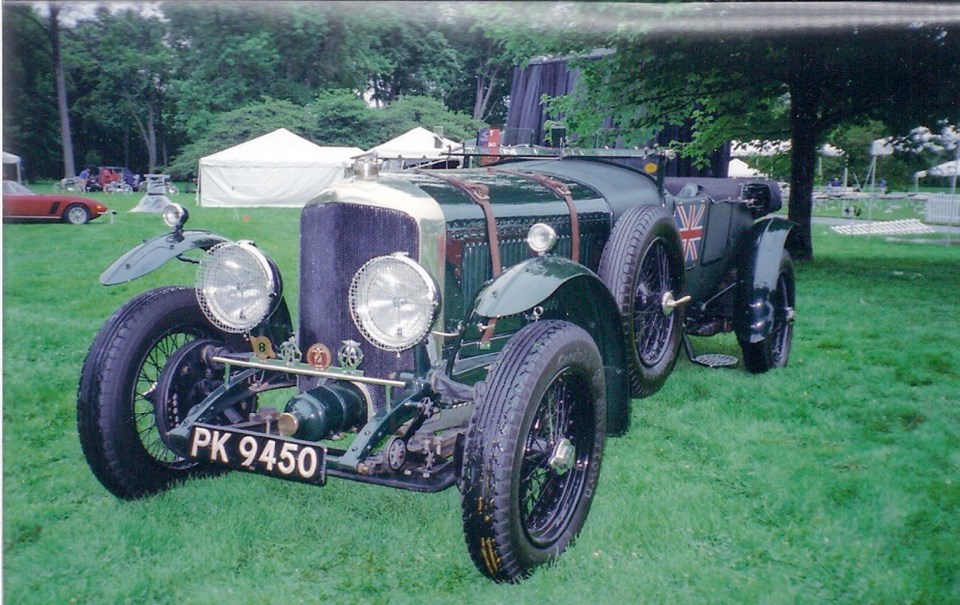Although the fabled British Bentley name is now part of the Volkswagen group, most of its life was with Rolls-Royce (now owned by BMW). It was a kind of understated Rolls, virtually the same in most cases, but with a Bentley badge and grille. Those seeking Rolls quality and prestige without the full measure of ostentation chose a Bentley.
Many Bentley enthusiasts believe that the “real” Bentleys were built during the first 10 years of Bentley’s production from 1921 to 1931, when it was an independent company. Some felt the Rolls-Royce Bentleys lacked the originals’ hard-edged ruggedness that could excel on road or track.
During that decade, a group of gentleman racers known as the “Bentley Boys” established a swashbuckling reputation for the marque. They brought Britain outstanding success in France’s famous Le Mans 24-hour race.
The Bentley’s father was Walter Owen Bentley, born in 1888. After an apprenticeship with the Great Northern Railway, he decided automobiles offered better prospects and joined the National Motor Cab Co., responsible for the repair and maintenance of its taxi cabs.
A couple of years later, in 1912, he and his brother Horace entered the car business selling French Doriot-Flandrin-Parant (DFP) cars. To gain publicity, W.O. entered a DFP in competition with some success. But he did much better after fitting the engine with aluminum pistons of his own design. The DFP’s easy-revving outran cars with larger engines, and Bentley pioneered aluminum pistons in production cars.
When war broke out in 1914, Bentley offered his aluminum-piston idea to the military and was sent out to convince engine makers to use them. Bentley also designed two rotary engines in which radially deployed cylinders rotated around a stationary crankshaft. But the rotary had no technical future and was replaced by the radial engine with the crankshaft rotating in the normal fashion.
Toward the end of the war, Bentley and two other engineers, F.T. Burgess and Harry Varley, began designing a new car suitable for fast Continental cruising. It was financed from good postwar sales of DFPs, and by November 1919, the first prototype appeared at London’s Olympia Motor Show.
It had a three-litre, four-cylinder engine with a very long 149-millimetre stroke and bore of only 80 mm. A shaft-driven overhead camshaft operated four valves per cylinder.
Orders started coming in following a glowing report in Autocar magazine, whose sports editor was S.C.H. (Sammy) Davis, a future Bentley Boy. But Bentley felt the car wasn’t ready for sale, and it was 1921 before the first delivery took place. Sales rose slowly: 145 in 1922, 204 in 1923, and 403 in 1924.
To gain publicity, Bentley participated in competition from the beginning. One car entered the 1922 Indianapolis 500, and although it was much too slow, it finished the race. They did better at the Isle of Man Tourist Trophy race later that year, coming in second, fourth (W.O. driving) and fifth. A Bentley finished a commendable fourth in the first Le Mans 24-hour race in 1923.
Then in 1924, Bentley won Le Mans. Although they failed to win in 1925 and ’26, Bentleys won in 1927, ’28, ’29 and ’30 for five victories in seven years, a feat not matched by any marque until Jaguar did it again for Britain in 1951, ’53, ’55, ’56 and ’57.
In response to some demand for heavier sedan bodies, Bentley introduced a 61Ú2-litre overhead cam six in 1925 with rubber engine mounts to reduce vibration. Production never exceeded 130 per year.
Another new model, the 41Ú2-litre, came in 1927. It was entered in Le Mans but was eliminated in a crash, and it fell to the 3.0-litre to carry on to victory. A third win came in 1928, then in 1929 a 61Ú2-litre Speed Six model won, followed by three 41Ú2-litre cars in second, third and fourth. It was a grand triumph for Bentley. It won again in 1930, but that would be the last factory entry.
An expensive foray into a supercharged 41Ú2-litre, the famed “Blower Bentley,” sapped company resources, and in spite of its Le Mans glory the Depression was too much. Bentley fell into receivership in 1931 and Rolls-Royce outmanoeuvred Napier to acquire Bentley.
W.O. stayed on until 1935, then joined Lagonda Motor Co., where he designed a 41Ú2-litre V-12 car with independent front suspension. Following the Second World War, W.O. designed a wonderful 21Ú2-litre twin-overhead-cam inline six.
When David Brown bought Lagonda in 1947 and combined it with Aston Martin, the Bentley-designed six gained fame powering the Aston Martin DB2 and later models.
W.O. Bentley died in 1971, leaving a grand automotive legacy.



